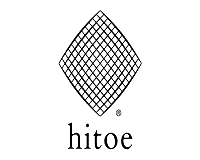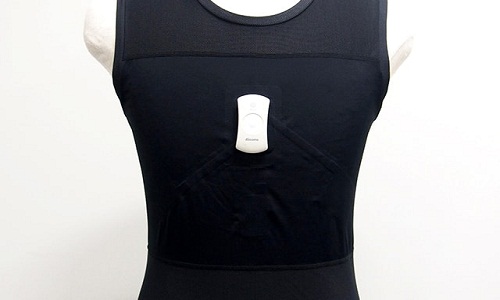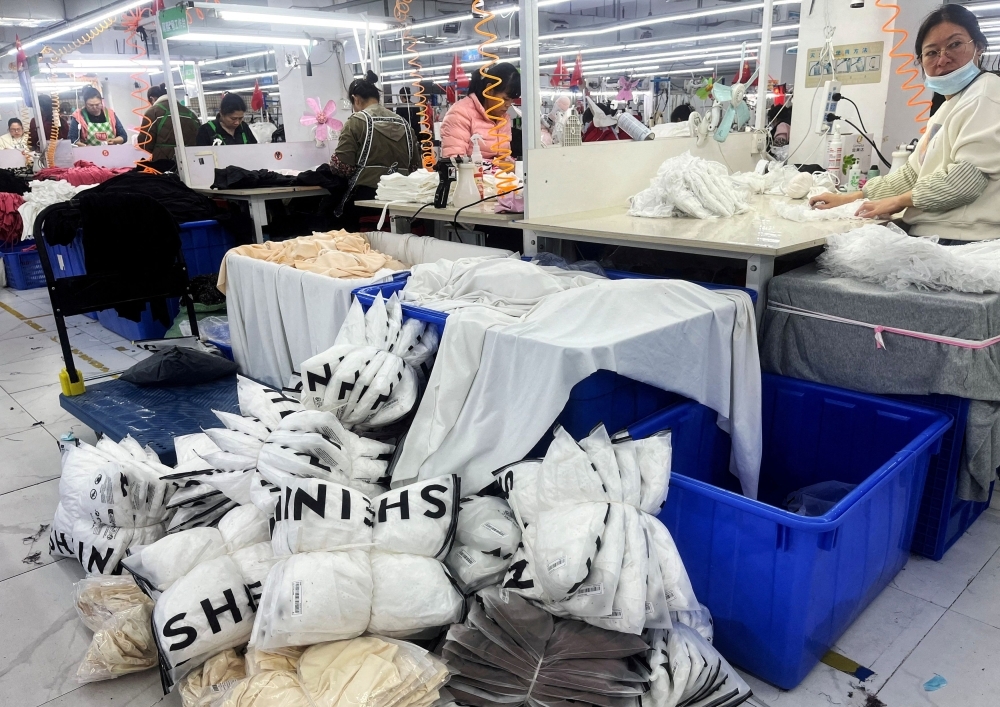"Dubbed as one of the most technologically advanced nations, Japan has been bringing interesting concepts in the world of textiles. Technical textiles that integrate cyber-technologies, such as Toray’s bio-electrode conductive nanofibre ‘hitoe’, a bio-electrode conductive fibre that monitors a user’s biometric signals through IoT, are an important element of such innovation for Japan’s cutting-edge textile sector. Takao Tobari, Executive Director, Japan Apparel-Fashion Industry Council points out that the efficiency in production of Japan’s technical textiles, in particular for sportswear and luxury textile brands, can be improved through the use of Iot."
 Dubbed as one of the most technologically advanced nations, Japan has been bringing interesting concepts in the world of textiles. Technical textiles that integrate cyber-technologies, such as Toray’s bio-electrode conductive nanofibre ‘hitoe’, a bio-electrode conductive fibre that monitors a user’s biometric signals through IoT, are an important element of such innovation for Japan’s cutting-edge textile sector. Takao Tobari, Executive Director, Japan Apparel-Fashion Industry Council points out that the efficiency in production of Japan’s technical textiles, in particular for sportswear and luxury textile brands, can be improved through the use of Iot.
Dubbed as one of the most technologically advanced nations, Japan has been bringing interesting concepts in the world of textiles. Technical textiles that integrate cyber-technologies, such as Toray’s bio-electrode conductive nanofibre ‘hitoe’, a bio-electrode conductive fibre that monitors a user’s biometric signals through IoT, are an important element of such innovation for Japan’s cutting-edge textile sector. Takao Tobari, Executive Director, Japan Apparel-Fashion Industry Council points out that the efficiency in production of Japan’s technical textiles, in particular for sportswear and luxury textile brands, can be improved through the use of Iot.
The government is providing financial incentives for a range of industries, including fabric and textile manufacturers. Japan’s ministry of economy, trade and industry (METI) said in a statement fashion tech and smart textiles are an important theme in promoting the use of IoT and the utilisation of digital tools in the textile industry. The government has allocated Yen JPY1.04bn (US$9.26m) for the 2018 fiscal year to create the foundation of a new industrial model to promote the use of IoT, with an emphasis on promoting the optimisation of supply chains by coordinating data among companies through IoT.
In addition, METI specifically placed JPY1.8bn (US$16.1m) in fiscal 2018 on public offer to each company that can realise its concept of Connected Industry, using digital technologies to connect companies with suppliers and customers and unite their own departments. The funds can be used to build a system whereby companies share big data accumulated via IoT.
can realise its concept of Connected Industry, using digital technologies to connect companies with suppliers and customers and unite their own departments. The funds can be used to build a system whereby companies share big data accumulated via IoT.
Automation boosting production
A report produced by the group outlines the potential for textile manufacturers to link individuals’ clothing orders, fashion tastes and body size through IoT to offer mass customisation. As a result, made-to-order products could be made with the same level of efficiency as in conventional mass production, thereby boosting productivity and eliminating dead stock. Komatsu Seiren, a leading fabric manufacturer, based in Ichikawa Prefecture, that produces fashion and sports garments as well as highly-functional fabrics has adopted this idea. Its virtual changing rooms allow customers to simulate wearing clothes of various sizes and patterns in front of a screen that is connected to the Internet. Factories then take orders, which are delivered direct to customers in around three weeks, allowing the company to reduce inventory losses and costs.
Marui Textile, also based in Ishikawa Prefecture, the heartland of Japan’s textiles industry, has a large-scale operation that utilises more than 1,000 looms. Aya Okajima, Marui spokesperson, stated that the company installed various sensors and cameras on the machines in the factory, which are connected to the Internet. These collect and analyse data, making the production status understandable and visible, in real time. In line with this, Kyoto-based textile machine manufacturer Murata Machinery has developed Muratec Smart Support, is a remote management system linked to IoT that is helping to deliver stable production, reduce labour costs and cut losses.
Upcoming business models
Japan’s eagerness to adopt cyber-physical systems to achieve Society 5.0 has also resulted in the development of new businesses opportunities in the country’s textile sector. In 2016, Hidekazu Kawano founded Tokyo-based Sitateru Inc, a model company in the government’s Local Employment Development programme for the promotion of new IoT-based partnerships. Based on the premise that optimisation in garment production requires innovative approaches that use IoT and ICT (information and communications technology), Sitateru offers three services: firstly, a chat tool called My Atelier, which allows manufacturers to respond instantly to requests from businesses for garments; and secondly, a control system that matches small-and-medium-sized companies throughout Japan with order-making businesses.
Kawano highlighted in a report that by bringing together data on their technological capacity and the items they are able to produce, as well as their price brands, lead times, and busy and quiet periods, we can now match orders from new customers with the optimal factory for their purposes; realising high-mix, low-volume production with a short turn-around time. While Japan is clearly still developing digitalisation in the textile industry, the country’s fabric-based electronics market (which uses IoT) is expected to grow to JPY21.1bn (US$187m) by 2020, according to the Yano Research Institute, which suggests IoT understanding is set to develop exponentially.











